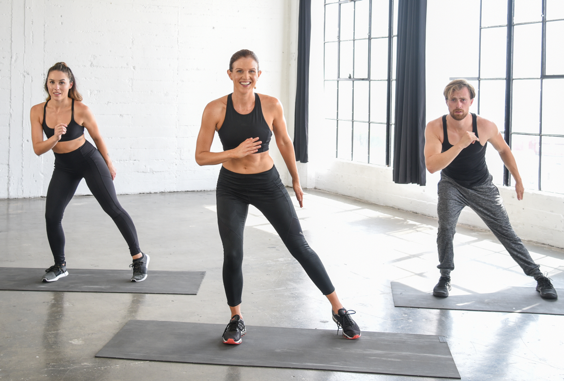Every Breath You Take
Is there a form of asthma triggered by exercise? Yep. Here’s what you need to know
Many athletes who think they are out of shape, may, in fact, be suffering from symptoms of exercise induced bronchospasm (EIB). EIB, which occurs in 10 to 20 percent of athletes, depending on the sport and activity environment, is a form of asthma seen in both recreational and competitive athletes.
EIB is a sudden transient narrowing of the airways called bronchospasm which may occur during or after exercise. Although EIB is characteristic of asthma, it can occur in athletes in great shape who have not been diagnosed with chronic asthma. As a result, EIB often goes undiagnosed and untreated.
Symptoms
Symptoms of EIB include wheeze, cough, chest tightness, fatigue, poor performance and, ultimately, activity avoidance. The symptoms can be very mild and even go unnoticed by the athlete. However, a minority of athletes experience severe symptoms. EIB usually begins five to 10 minutes after the onset of activity that is moderate or vigorous. Symptoms peak by five minutes after exercise ends and can last up to 30 minutes if gone untreated. In contrast, symptoms of the de-conditioned athlete resolve quickly after exercise.
A physician should evaluate those concerned that they may have EIB. Since other diagnoses such as vocal cord dysfunction, de-conditioning, over-training and cardiac abnormalities can present similar symptoms, it is important to rule them out.
Testing usually involves Spirometry (ventilation testing) before and after exercise. Sometimes a field exercise challenge is necessary to simulate sports-specific environments. However, these tests are not positive for everyone with EIB so other diagnostic tests or even a trial with a bronchodialator inhaler may be recommended.
PREVENTING/TREATING EIB
Once diagnosed, EIB has several preventive strategies and treatment options. The rapid ventilation of air that is cold, dry or contains irritants may trigger EIB. Thus, staying out of cold, dry air will greatly reduce the chance of symptoms. If that is not an option, wearing a face mask can enrich inhaled air with heat and moisture prior to reaching the lungs. Other strategies are as follows:
Breathe through your nose, which helps warm and moisten the air before it reaches the bronchioles of the lung.
Choose lower-intensity sports with less ventilation.
Exercise indoors on days when pollen and environmental pollutants are high.
Warm up lightly for 30 to 45 minutes before a vigorous workout. This will prevent any sudden changes in airflow, moisture or temperature.
Use alternating work and rest periods (interval training) for up to five minutes since EIB usually starts several minutes into a vigorous workout.
Treatments
Though some athletes can keep symptoms under control with simple preventive strategies, some require medical treatment. Bronchodilator inhalers, such as Albuterol, are usually the first line of defense. Inhalers keep the airways relaxed and open and work quickly, typically within 15 minutes.
Corticosteroid inhalers, such as Qvar, work as airway anti-inflammatories, which reduce the inflammation of the airways over time. Take these medications daily, regardless of activity level, to be effective. Typically, if preventive strategies and a bronchodialtor inhaler do not control symptoms, a combination of corticosteroids and other medications may be used.
Most importantly, do not allow EIB to become a deterrent from exercise. Work with your physician to control your symptoms so that you can continue to exercise at a high level. Exercise training will improve fitness. As a result, any given exercise level needs a lower level of breathing. Good cardiovascular fitness will enable you to exercise at a higher intensity before having any EIB symptoms.
Dr. Mo Mortazavi is pediatric sports medicine physician for the UC Davis Children’s Hospital.
[bsa_pro_ad_space id=2]

